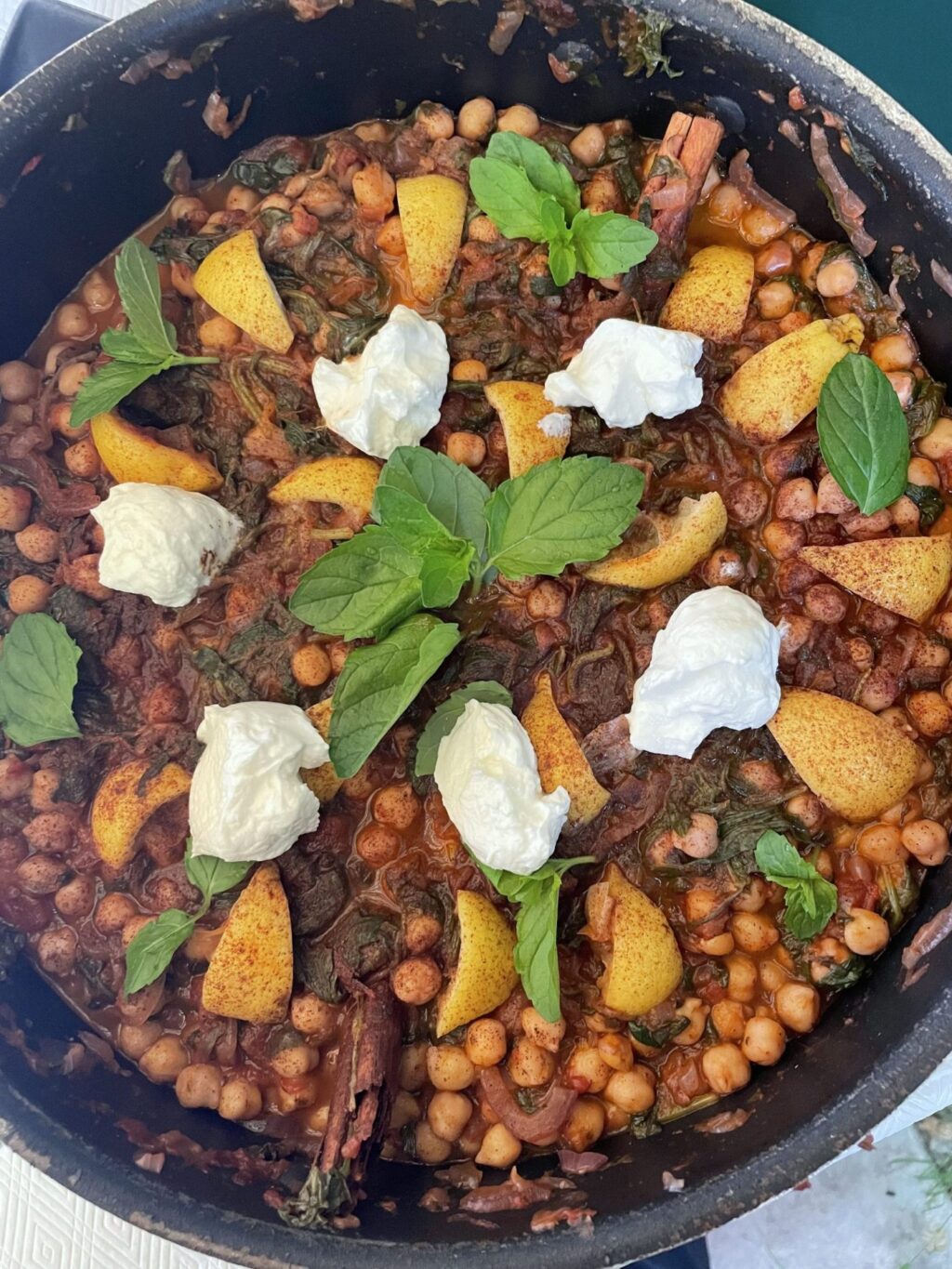
These days it’s not enough to visit a foreign country just to see the sights. Travelers want experiences, and high on the list are hands-on cooking classes.
Cindy and Fred Jacobson of Yorba Linda recently returned from a trip through Spain and loved the chickpeas and spinach dish featured here so much, they recreated it at home and brought it to a potluck (where, luckily, I was in attendance.)
“We found the class on Trip Advisor,” said Cindy. “It was called ‘Tapas and Sherry, an Andalusian Gourmet Experience,’ given by Linsey Drake, a caterer and chef who lives up in the hills between Seville and Malaga. They grow their own olives and make their own olive oil. You get the whole rustic Andalusian experience at her house.”
Drake’s business name is La Rosilla, Cindy told me.
“She’s actually from Birmingham, England. She and her husband moved there 25 years ago and raised their kids in Spain. During the class we also made meatballs and stuffed peppers, and we tasted four different kinds of sherry. We baked cookies called galletas de pueblo made with olive oil and lemon.”
Variations of the chickpeas and spinach dish are very popular in Seville, where it’s served in all the tapas bars, Cindy noted.
“Spinach came from Persia, and when the Arabs took over, they brought spinach to Spain, and it became the most important Spanish vegetable,” she said. “Chickpeas were brought to Spain by the Phoenicians and continue to be very popular in Sephardic Jewish and Moorish dishes. You can eat this dish as a big stew, as a meal, but it’s very popular as a tapa.”
“Tapas refers to a style of serving small portions of food between or before meals. The word comes from the Spanish word “tapar,” meaning “to cover.”
Originally, tapas were served so patrons could cover their drinks to keep the flies away. The custom began in Andalusia, influenced by the Moors. As the story goes, in the 13th century King Alfonso X of Castile had to consume small portions of food and wine as he recovered from illness. Subsequently he ordered that taverns must serve small snacks or tapas with wine.
Cindy and Fred had their work cut out for them when they returned.
“Linsey wrote no measurements, nothing, so then Fred and I experimented and developed a second recipe that works. We had had it served as a tapa in Seville. Linsey’s was even better because she used different spices. Ours is even spicier,” Cindy said. “Linsey served it in individual bowls, with the cinnamon, mint and yogurt on each. We served it in one pot and just decorated the whole thing.
“This dish is often served at room temperature,” she added. “Like any stew, its flavors are actually better if you give them time to meld.”
Fullerton’s Judy Bart Kancigor is the author of “Cooking Jewish” and “The Perfect Passover Cookbook.” Her website is cookingjewish.com.
MOORISH/ANDALUSIAN CHICKPEAS AND SPINACH (ESPINACAS CON GARBANZOS)
Adjust the heat with the chili or harissa to your liking.
Ingredients:
1 to 2 tablespoons olive oil
1 large red onion, sliced thin
1 teaspoon cumin seeds
1 tablespoon paprika (sweet or smoky)
Harissa paste or chili paste, to taste
4 tomatoes, skinned and chopped
1 tablespoon dried mint
2 cans (16 ounces each) chickpeas
2 cinnamon sticks
1 pound fresh spinach, coarsely chopped
Juice of 2 lemons (1/4 cup); lemon peels sliced into small wedges
1 capful orange blossom water
Salt and pepper
Ground Cinnamon, fresh mint, and plain Greek yogurt, to serve
Method:
1. In large sauté pan, heat olive oil and gently fry onions until softened. Stir in cumin seeds, paprika, and harissa. Add chopped tomatoes and cook for 5 minutes. Stir in dried mint and chickpeas. Simmer 5 minutes
2. Place cinnamon sticks into mixture, cover with spinach, pour in lemon juice and orange blossom water, and lay lemon peel wedges on top. Cover pan and cook until spinach wilts, about 10 minutes.
3. Remove lemon peels; then stir and adjust seasonings, adding salt and pepper and harissa to taste.
4. Place cooked lemon peels decoratively around top of stew. For best flavor, replace lid and allow dish to rest for about an hour.
5. To serve, dust with ground cinnamon, then sprinkle with sprigs of fresh mint and add dollops of yogurt around the top.
